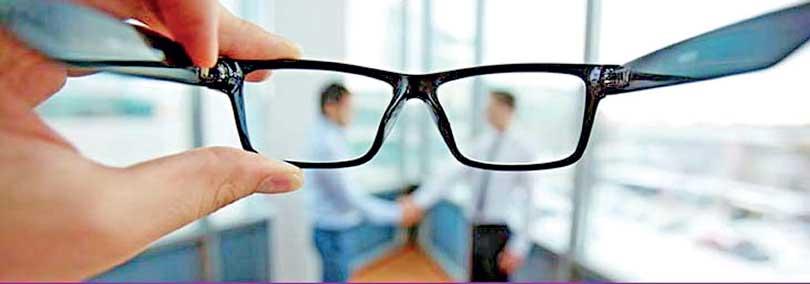17 Jan 2020 - {{hitsCtrl.values.hits}}

 When many vision related conditions tend to show symptoms in terms of gradual loss of sight or vision impairment, a condition that is asymptomatic until the final stages is diabetic retinopathy. One of the leading causes of blindness according to the WHO, diabetic retinopathy is one of the most important complication of diabetes. It affects the inside of the eye by damage to the blood vessels of the retina. Daily Mirror spoke to Dr. Deepanee Wewalwala, a Consultant Eye Surgeon at the National Eye Hospital and the Focal Point for Prevention of Blindness-Diabetic Retinopathy in Vision 2020 Programme, regarding this.
When many vision related conditions tend to show symptoms in terms of gradual loss of sight or vision impairment, a condition that is asymptomatic until the final stages is diabetic retinopathy. One of the leading causes of blindness according to the WHO, diabetic retinopathy is one of the most important complication of diabetes. It affects the inside of the eye by damage to the blood vessels of the retina. Daily Mirror spoke to Dr. Deepanee Wewalwala, a Consultant Eye Surgeon at the National Eye Hospital and the Focal Point for Prevention of Blindness-Diabetic Retinopathy in Vision 2020 Programme, regarding this.
How does it occur?
“The main cause for this is being a diabetic. When there is a chronic rise in blood sugar level, blood vessels in the eye tend to get damaged or blocked. This can cause diabetic retinopathy,” explained Dr. Wewalwala. She described the two different stages of the condition which occur as a result of retinal hypoxia , which occur due to reduced blood supply to retinal tissue
Non Proliferative Diabetic Retinopathy (NPDR)
Proliferative Diabetic Retinopathy (PDR)
Diabetic retinopathy can only be identified after screening is done as the early stages are usually asymptomatic
 Non Proliferative Diabetic Retinopathy
Non Proliferative Diabetic Retinopathy
NPDR is the earlier stage of diabetic retinopathy .In this stage, , walls of the blood vessels weaken and bulges. Weakened vessel walls allow leakage of fluid into the retina or may rupture.
Proliferative Diabetic Retinopathy
PDR is a more advanced stage of diabetic retinopathy and in this condition new blood vessels grow in response to retinal hypoxia. These new vessels are unusually fragile and cause haemorrhage in to the retina and vitreous producing the following symptoms :
In addition to these symptoms the abnormal blood vessels lead to formation of fibrous tissue. The contraction of fibrous tissues causes the retina to detach. Retinal detachment leads to gradual loss of vision.
Macular oedema (swelling of the central part of the retina) could occur in addition to either of the above stages or without any associated retinopathy
In extremely advanced stages of diabetic retinopathy, the following symptoms are seen:
She remarked that patients suffering from diabetes are also prone to develop cataract, severe eye infections and glaucoma.
Identification of diabetic retinopathy
“Since it is asymptomatic, patients do not come to us until the final stages where sight in one or both eyes is almost gone,” shared Dr. Wewalwala. She went onto state that when people are diagnosed with diabetes, they are advised to undergo screening for diabetic retinopathy soon after diagnosis of diabetes . “Diabetic retinopathy can only be identified after screening is done as the early stages are usually asymptomatic,” said Dr. Wewalwala.
The doctor further informed that eye units in all teaching hospitals, Provincial hospitals, District General hospitals and A type Base hospitals have screening facilities. “All diabetic patients coming for any other ocular symptoms are usually screened. Patients are requested to be aware of any changes in vision and attend screening regularly,” she said adding that a diabetic patient is screened annually for diabetic retinopathy.
She added that in a World Bank funded project, nearly 400 Medical Officers working in diabetic or medical clinics in Divisional hospitals and B type Base hospitals were trained to do eye screening using simpler equipment.
Treatment options
However, Dr. Wewalwala remarked that even in the hands of best surgeons, the vision might be sub optimal following surgery for advanced retinopathy . “Patients should remember that these treatments options will work only if the patient’s blood sugar level is under control and their blood pressure and blood lipid levels are at an optimal level,” she shared. Presence of retinopathy indicates that the diabetic kidney damage is imminent or has already occurred.
Challenges
Dr. Wewalwala pointed out that the patients should be compliant at all stages of the treatment. “The effects of the laser treatment take time (around 6 weeks) to be seen and though we always inform the patients, there are many who think the treatment isn’t effective.”
The next issue she identified was the lack of proper counselling for the patients is a general lack of counselling services. “The ophthalmologist provides the counselling but due to our workload, we aren’t able to provide the needed counselling for the patient which causes lack of awareness regarding management and the development of complications
She also stated that another challenge were the relative shortage of expensive instruments needed for mass screening, special investigations and treatment.
Vision 2020
Speaking about the Vision 2020 programme, she stated that it has helped spread awareness on conditions like this. “Through this programme, guidelines have been provided to general ophthalmologists and trainees for screening and management of such conditions. Equipment has also been provided to eye units to ensure accurate screening. Awareness has been spread through various initiatives like media conferences and posters,”
In conclusion, Dr. Wewalwala requested every person diagnosed with diabetes to undergo screening for diabetic retinopathy, keep their blood sugar under control and comply with the treatment.

21 Dec 2024 5 hours ago
21 Dec 2024 21 Dec 2024
21 Dec 2024 21 Dec 2024
21 Dec 2024 21 Dec 2024
21 Dec 2024 21 Dec 2024